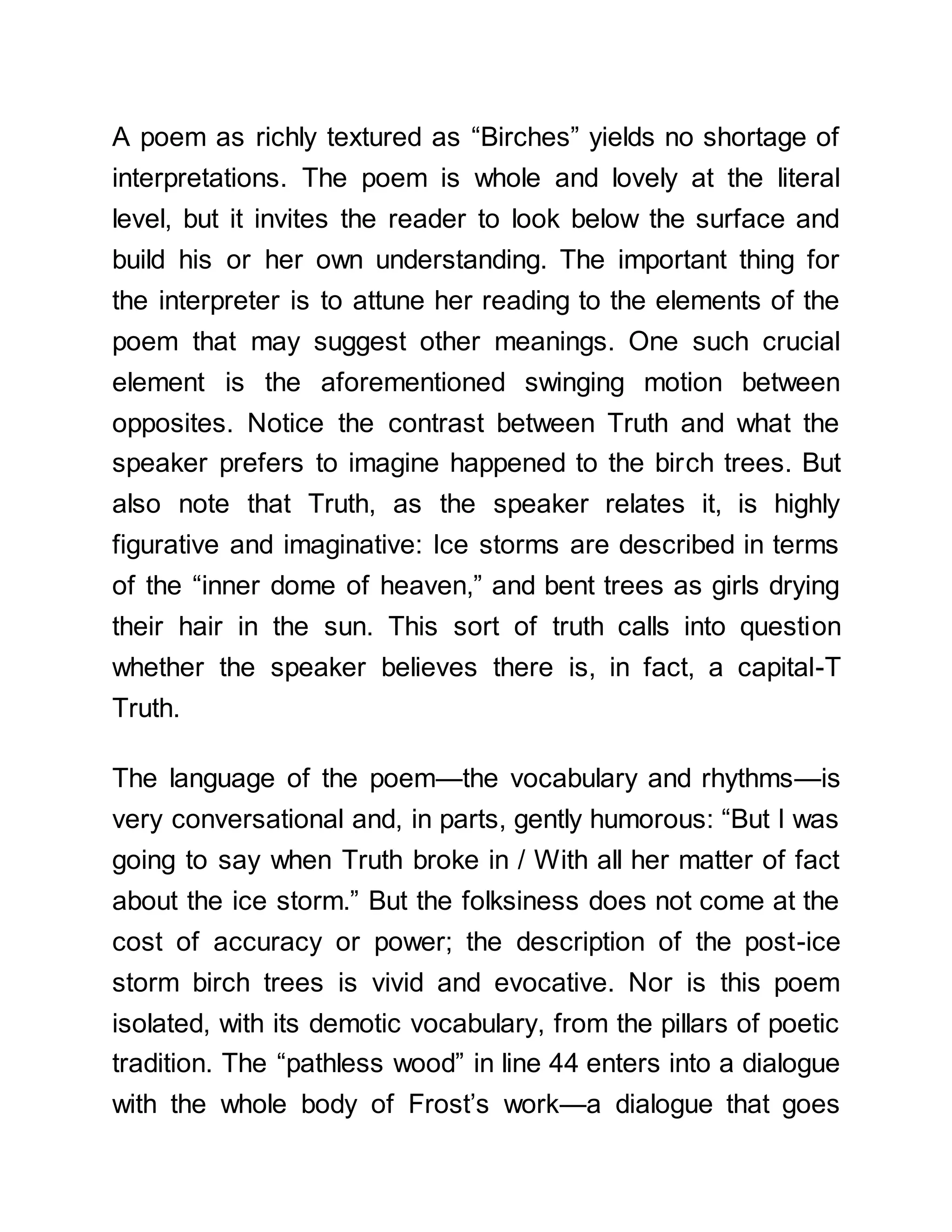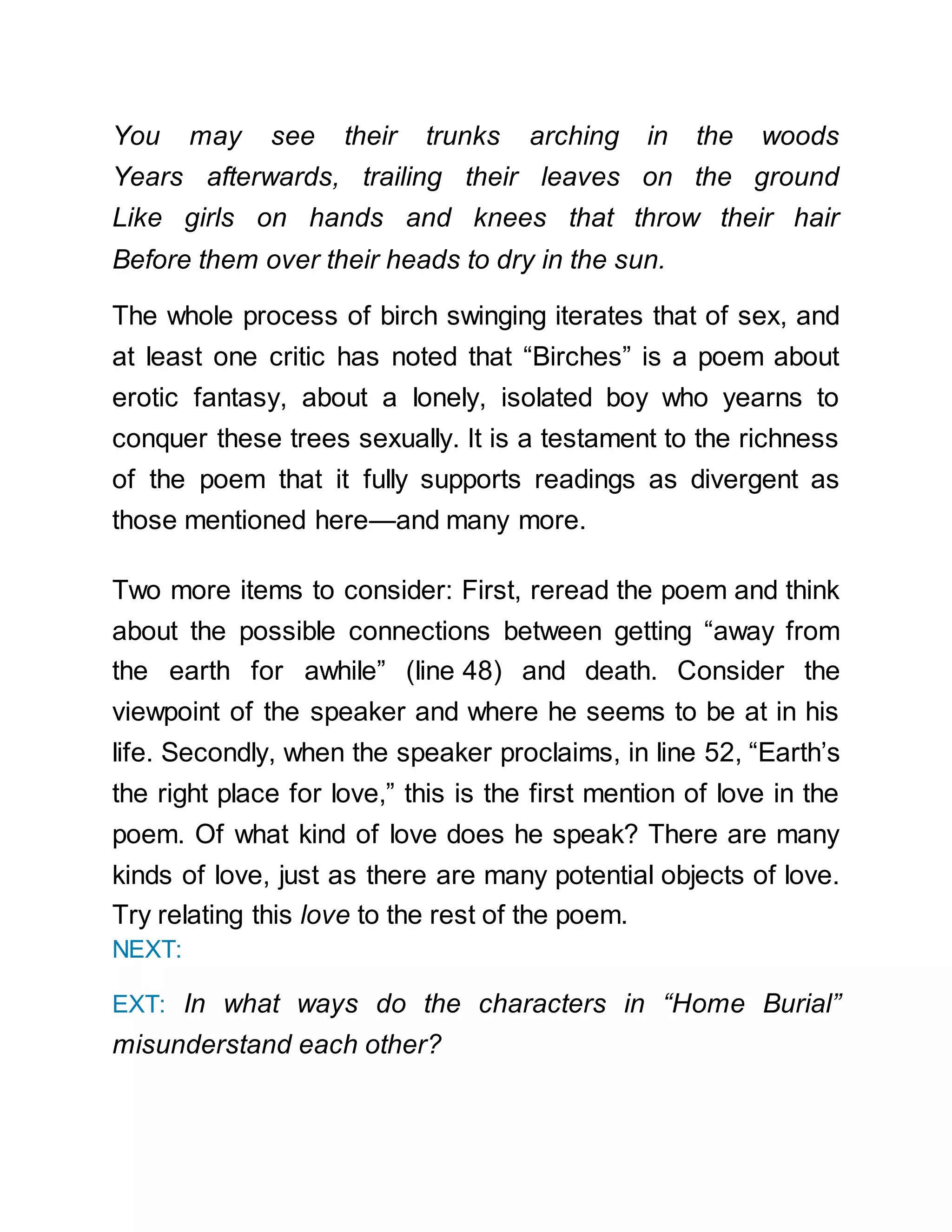Robert Frost was an American poet who achieved both critical and popular success during his lifetime. He published his first collection of poems, A Boy's Will, in 1913 at age 39, though he had been writing poetry for decades prior. Over the following decades, Frost published numerous collections that earned him widespread acclaim and four Pulitzer Prizes. His poems, often set in rural New England, explored themes of nature, isolation, and community through precise language and form. Though he worked within traditional forms, Frost's innovative use of language and variation helped shape American poetry in the early 20th century.










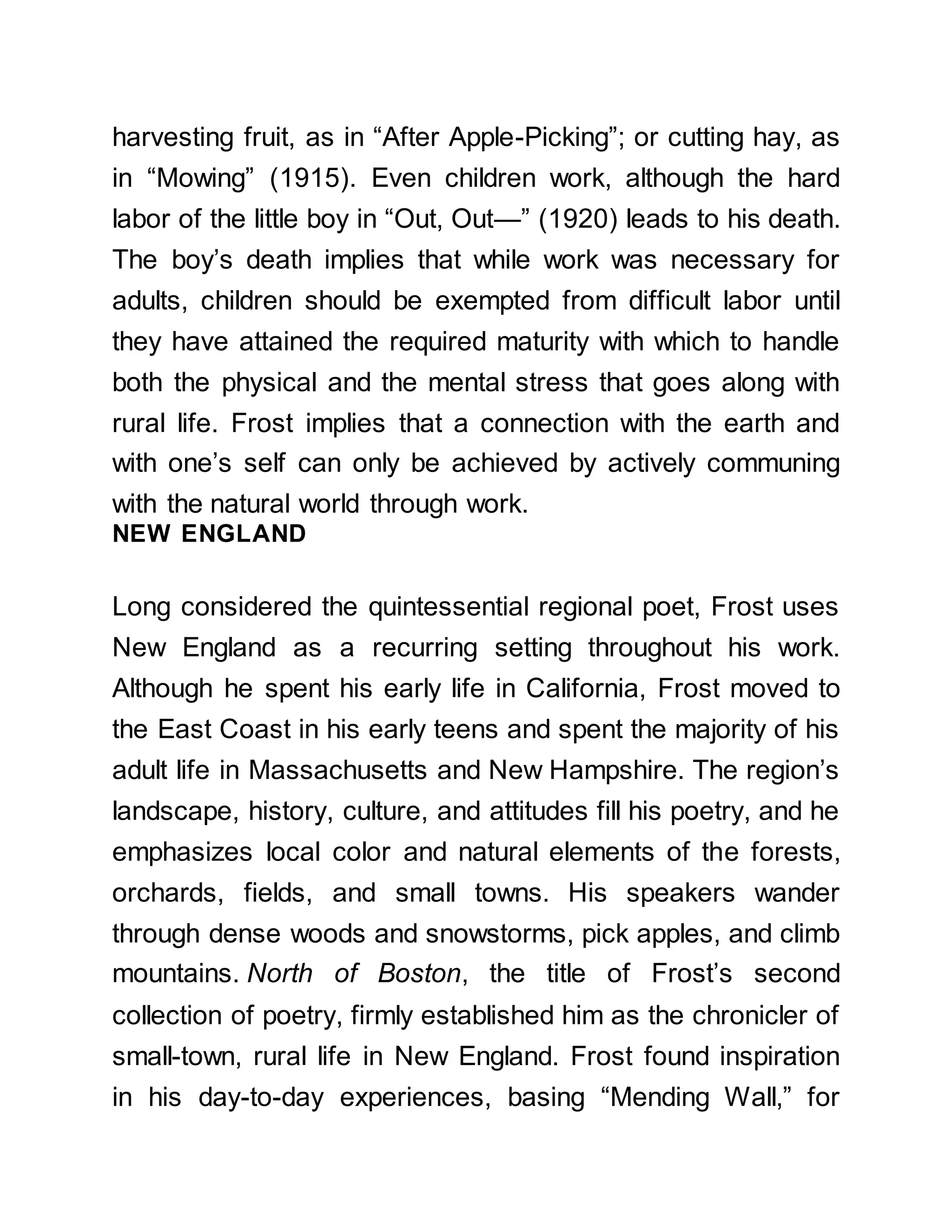


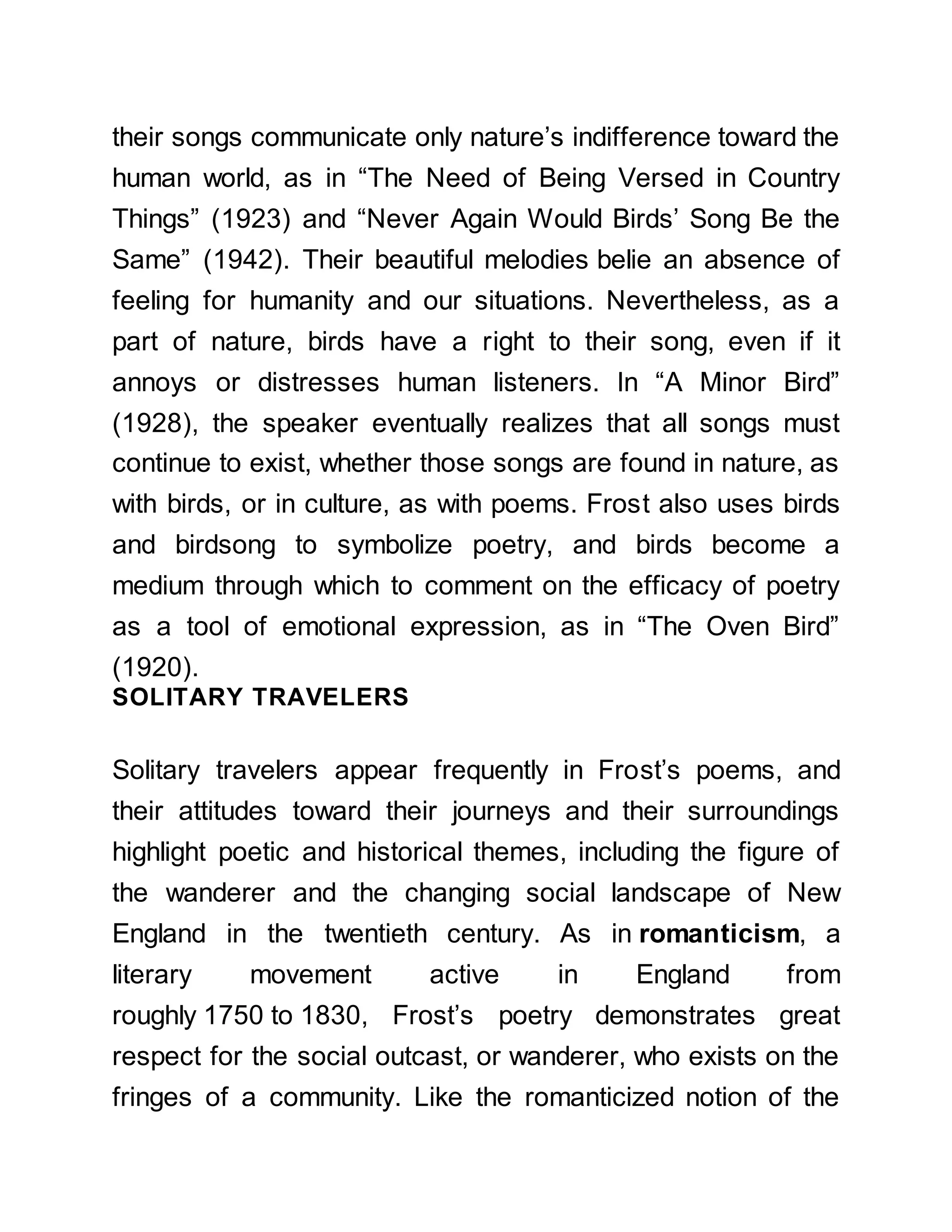






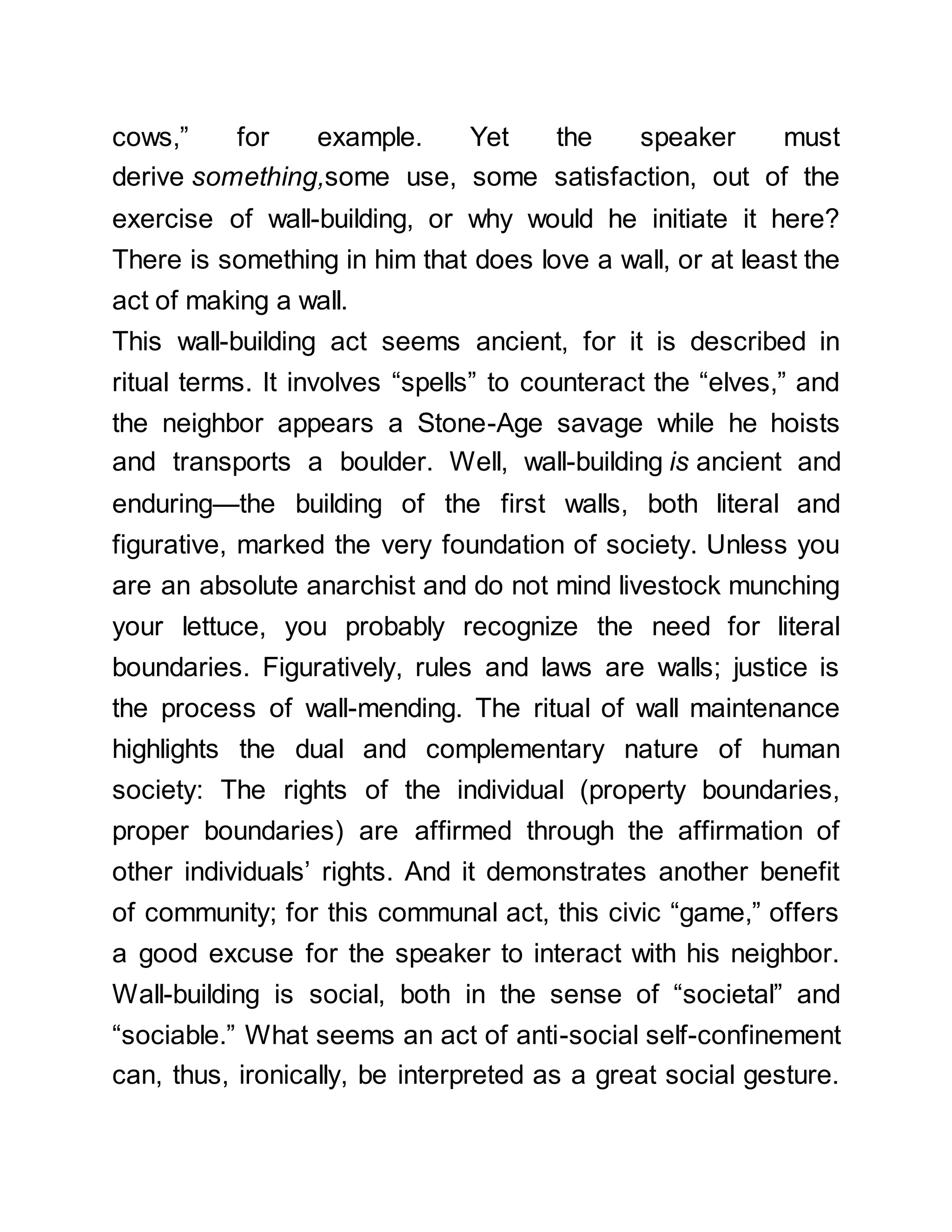


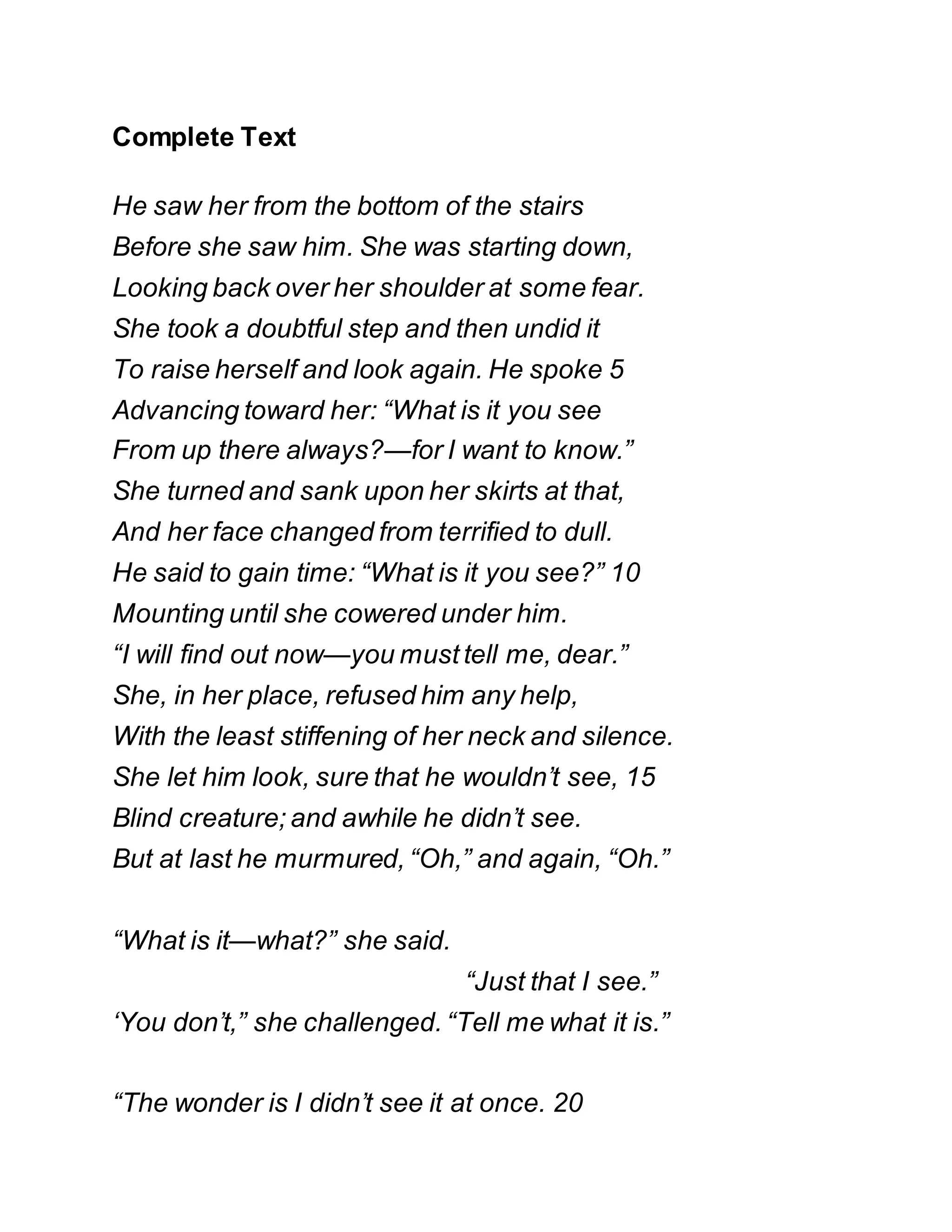


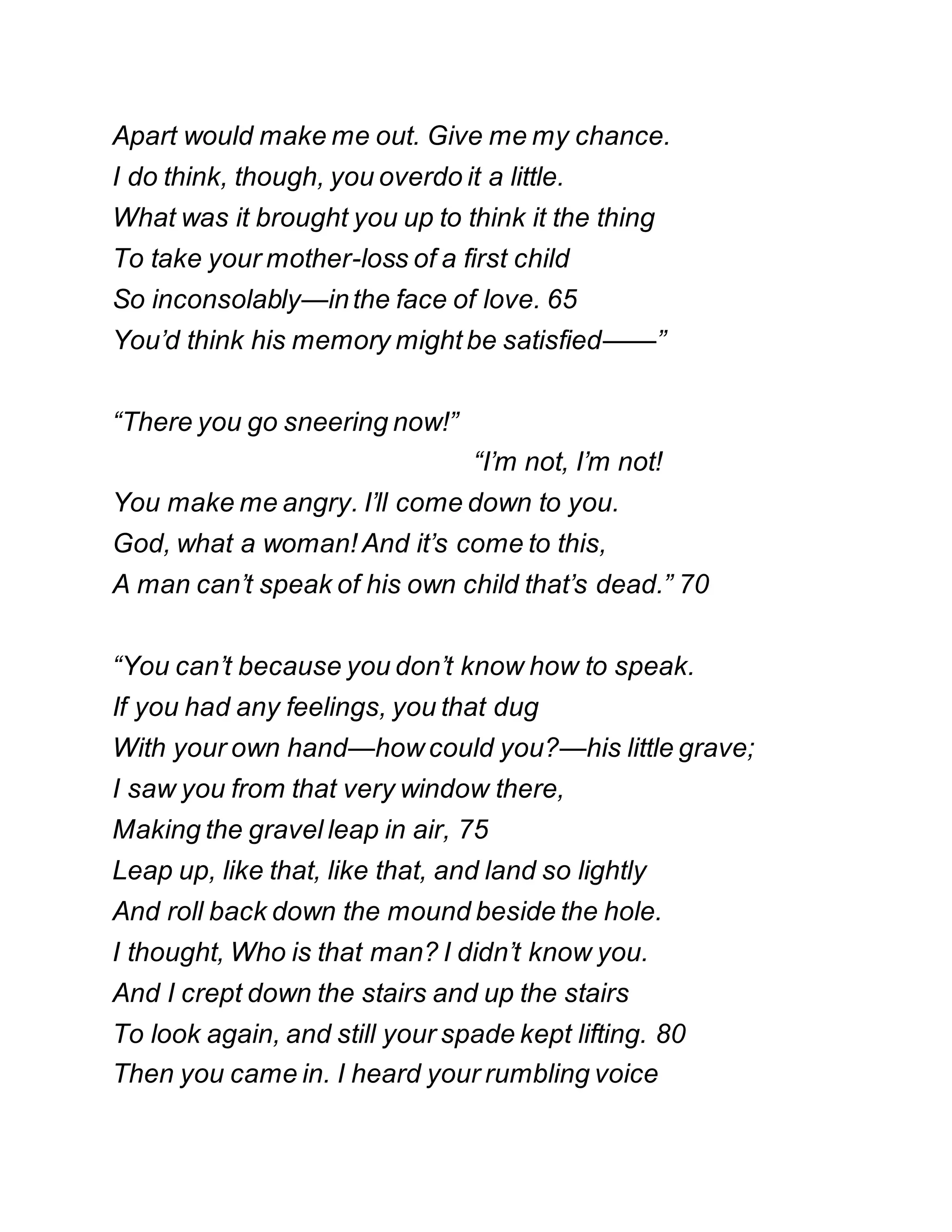





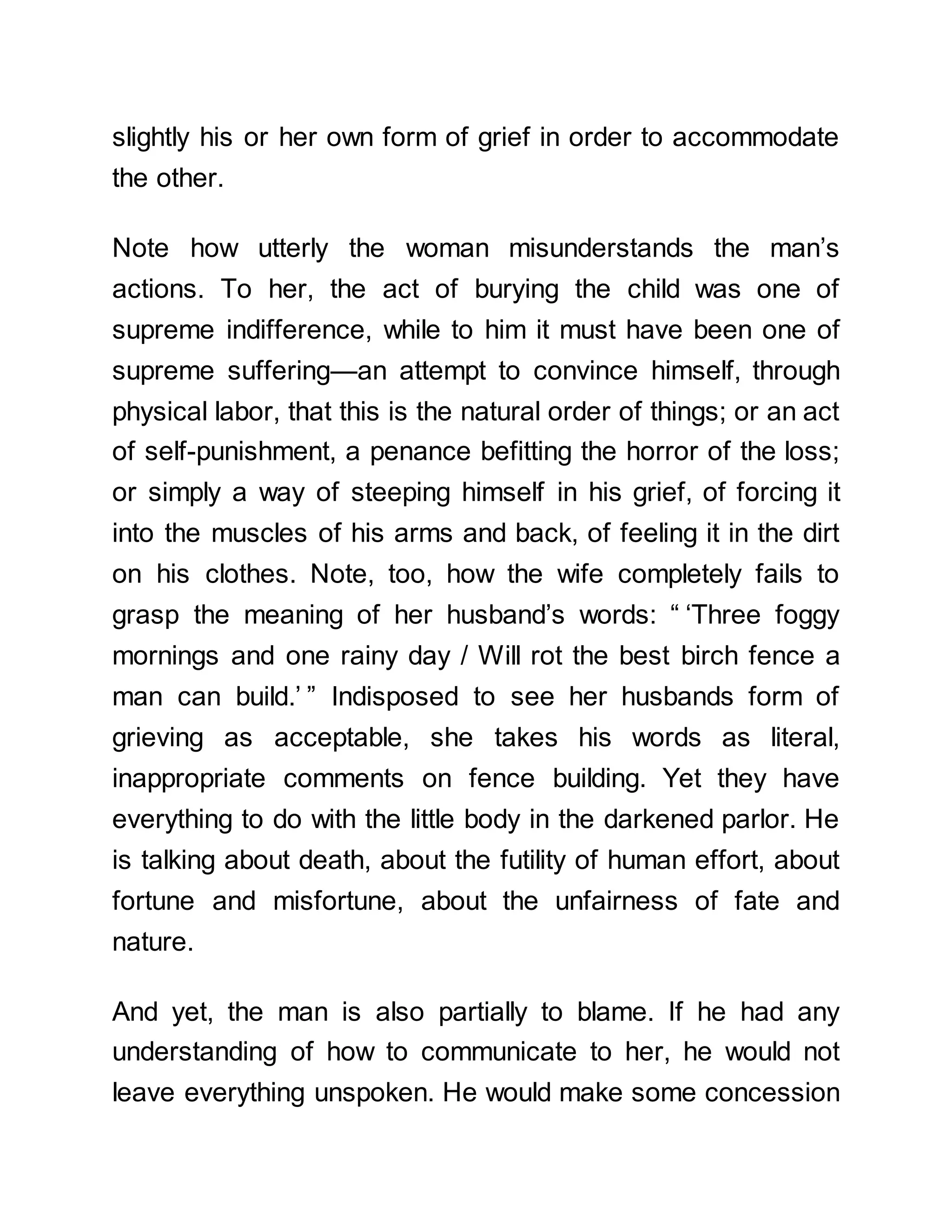





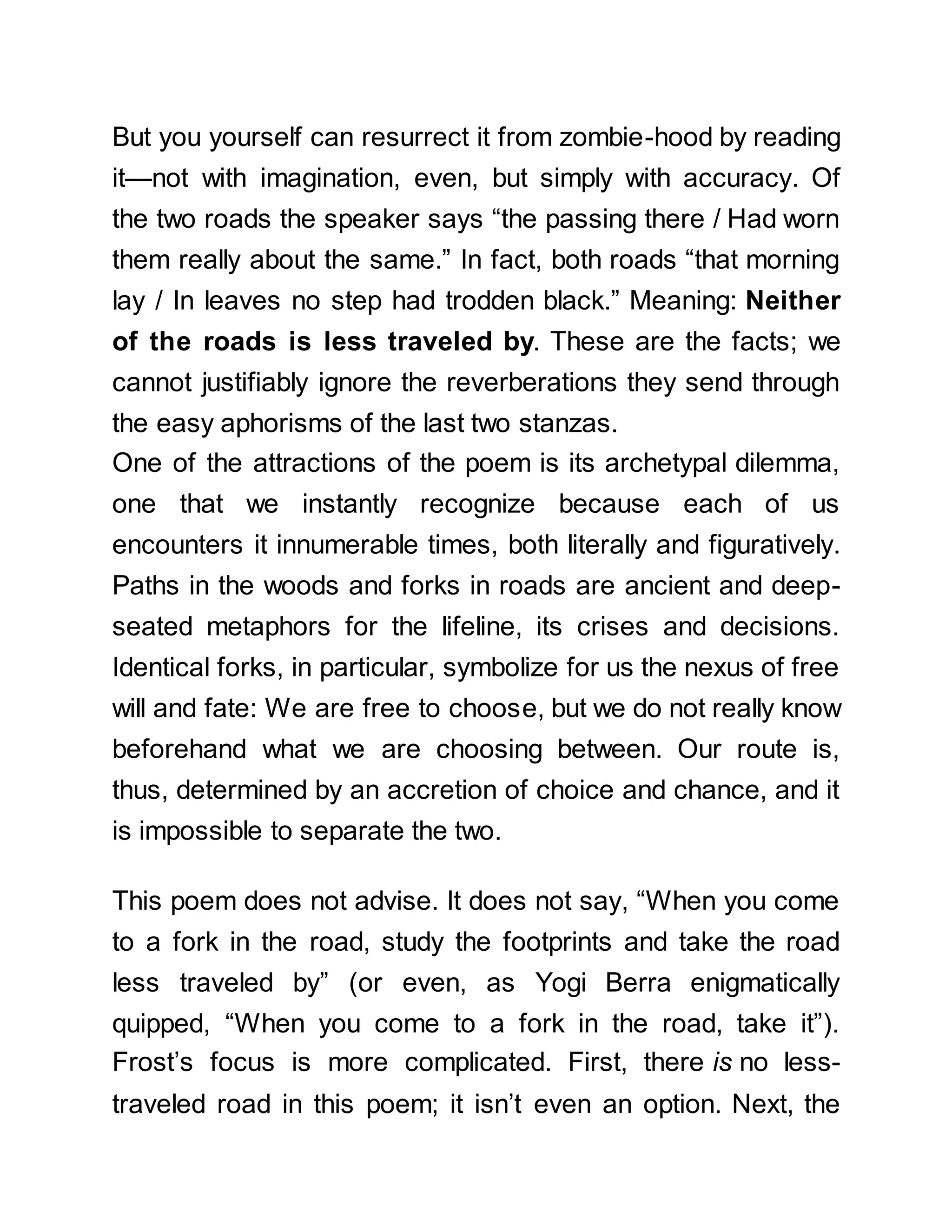


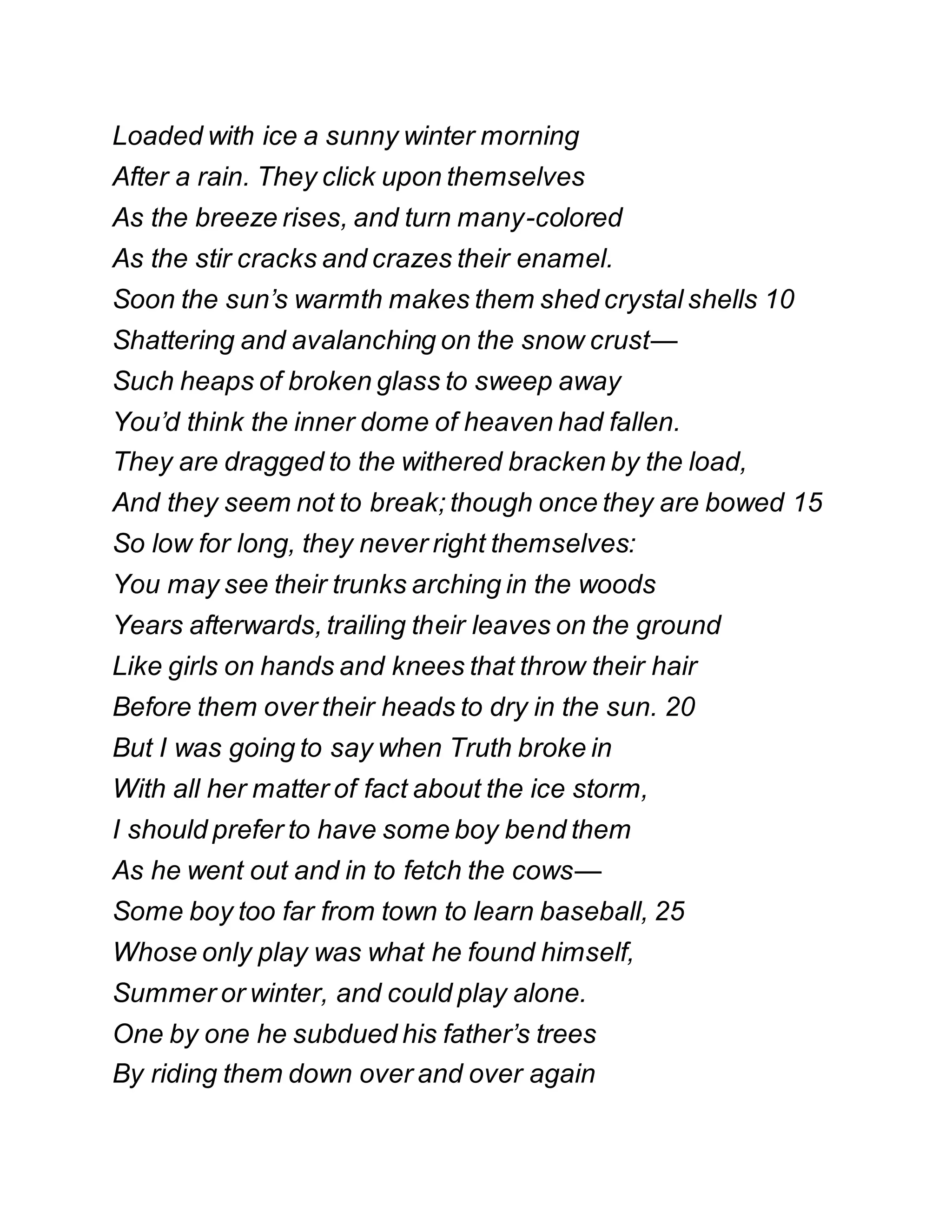
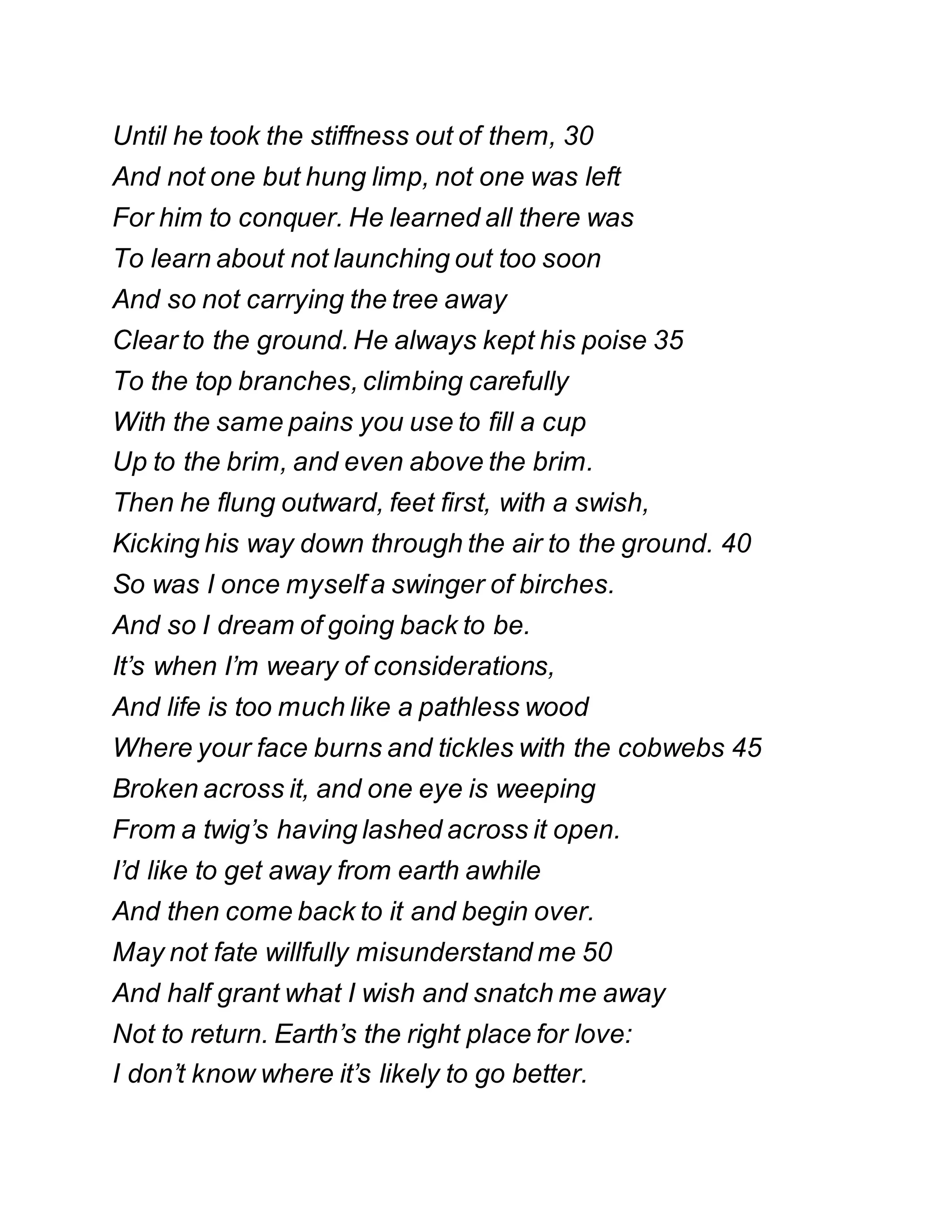

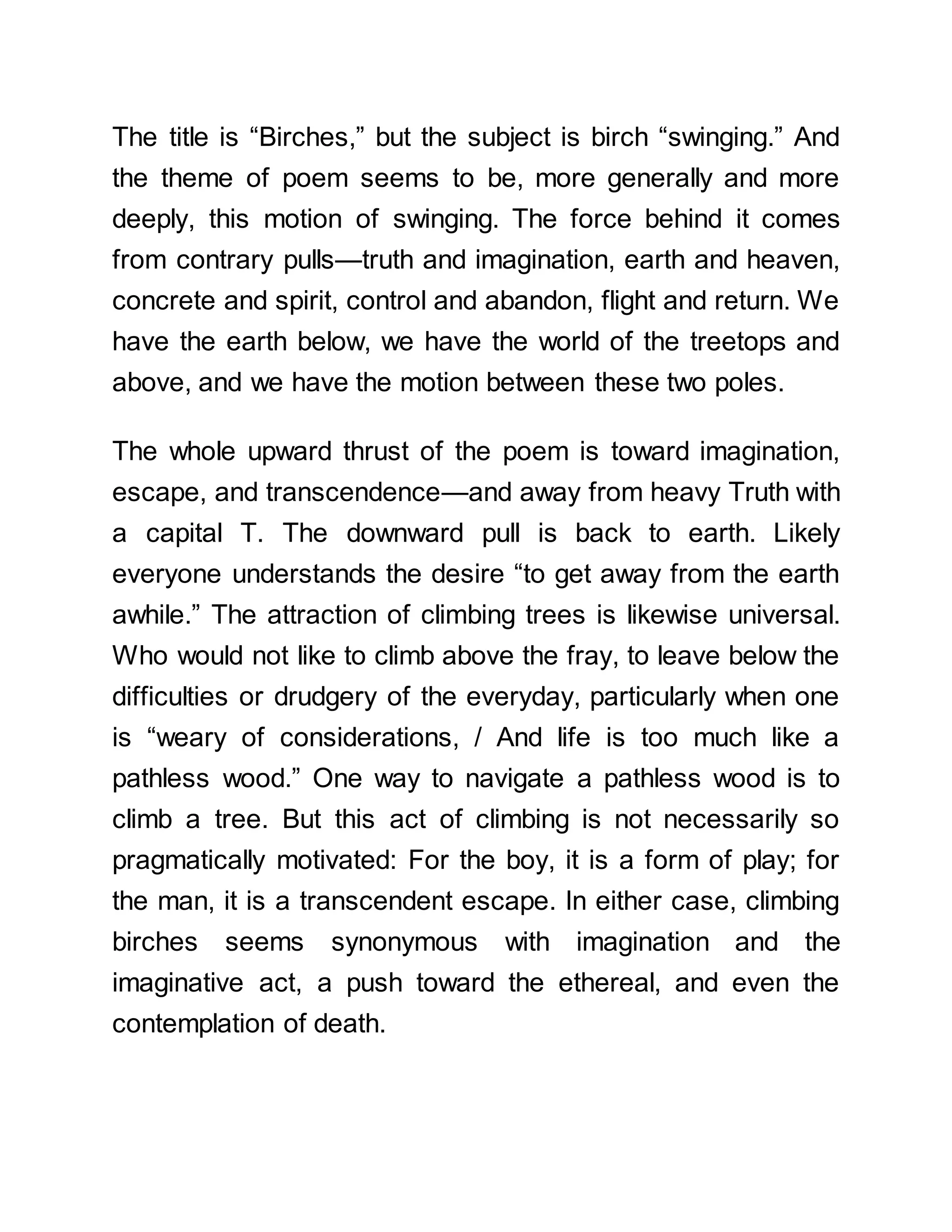
![But the speaker does not leave it at that. He does not want his
wish half- fulfilled—does not want to be left, so to speak, out
on a limb. If climbing trees is a sort of push toward
transcendence, then complete transcendence means never to
come back down. But this speaker is not someone who puts
much stock in the promise of an afterlife. He rejects the self-
delusional extreme of imagination, and he reinforces his ties
to the earth. He says, “Earth’s the right place for love,”
however imperfect, though his “face burns” and “one eye is
weeping.” He must escape to keep his sanity; yet he must
return to keep going. He wants to push “[t]oward heaven” to
the limits of earthly possibility, but to go too far is to be lost.
The upward motion requires a complement, a swing in the
other direction to maintain a livable balance.
And that is why the birch tree is the perfect vehicle. As a tree,
it is rooted in the ground; in climbing it, one has not
completely severed ties to the earth. Moreover, as the final
leap back down takes skill, experience, and courage, it is not
a mere retreat but a new trajectory. Thus, one’s path up and
down the birch is one that is “good both going and coming
back.” The “Truth” of the ice storm does not interfere for long;
for the poet looks at bent trees and imagines another truth:
nothing less than a recipe for how to live well.](https://image.slidesharecdn.com/robertfrost-170705090853/75/Robert-frost-46-2048.jpg)
